Diagnosis and treatment of TMJ diseases

specialists

equipment

treatment
TMJ diseases and their causes
The temporomandibular joint is susceptible to many diseases, each of which has its own symptoms and causes.
In addition, the TMJ can be affected by synovitis (inflammation of the synovial membrane), which causes discomfort and swelling. Sometimes there is hypermobility of the joint, which leads to frequent dislocations and increased stress on the tissues. Trigeminal neuralgia associated with the TMJ is possible. It provokes sharp shooting pain in the face, which intensifies when chewing or talking.
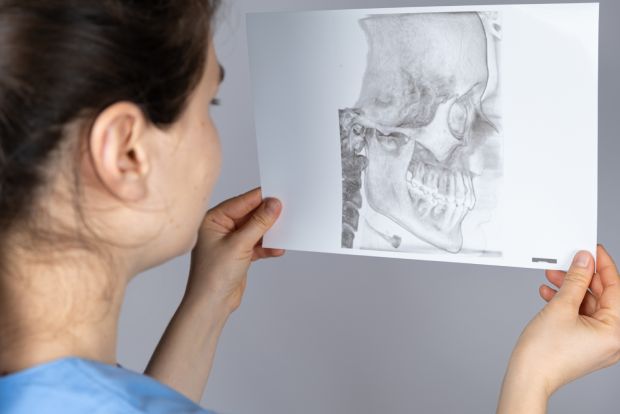
- Musculoskeletal dysfunction Characterized by disruption of the masticatory muscles and incorrect arrangement of the joint elements, which provokes pain, grinding of teeth, clicking when moving the jaw. Causes include stress, muscle strain and malocclusion
- TMJ arthrosis A degenerative disease in which joint tissues wear out, causing discomfort, limited mobility, crunching. Causes may include injuries, age-related changes and overload
- TMJ arthritis An inflammatory disease that is accompanied by pain, swelling, limited mobility. Its development is associated with infections, injuries or allergic reactions
- Dislocation and subluxation of the articular head Characterized by acute pain, deformation of the jaw, inability to close the mouth. Occurs if the head of the joint goes beyond the socket due to injuries or sudden movements
- Damage to the articular disc It is expressed in the displacement or deformation of the disc, which leads to pain, clicks, limited mobility. The causes may be injuries or chronic overexertion
- Ankylosis The disease is characterized by the fusion of articular surfaces, which limits the mobility of the joint and provokes pain. The causes of the development of pathology include infections, injuries, congenital anomalies
Methods of TMJ diagnostics
Diagnostics of TMJ includes clinical and instrumental research methods aimed at identifying pathology of the joint and adjacent structures.
Clinical studies of TMJ
Clinical studies of TMJ include:
- Patient interview. The doctor collects anamnesis, clarifies information about the nature and duration of symptoms, possible injuries, stressful situations, habits (for example, grinding teeth)
- External examination and palpation. The doctor examines the joint area, identifies the presence of swelling, asymmetry, pain during palpation
- Auscultation. Using a stethoscope, the doctor listens to the sounds made by the joint during movement (crunching, clicking)
- Assessment of the amplitude of jaw movements. The doctor measures how wide the patient can open his mouth, the presence of deviations when moving the jaw to the sides
In controversial situations, functional studies are prescribed for additional diagnostics of TMJ. They allow to obtain a comprehensive assessment of the body's condition.
Functional diagnostics
The basic methods of functional diagnostics of TMJ include:
- Heart rate variability (HRV). Studies variations in the time intervals between heartbeats, showing the work of the autonomic nervous system
- Study of orthostatic stability. Used to analyze the response of the cardiac and vascular systems to changes in body position (for example, rapid movement from a lying to a standing position)
- Tests for reflex sympathetic dystrophy. Cover actions aimed at stimulating reactive responses of the autonomic nervous system
Sometimes, analysis of the response to drug stimuli is used. It includes an assessment of changes in autonomic functions under the influence of medications, such as tests using adrenergic and cholinergic substances, which helps to identify dysfunctions.
Axiography
X-ray studies
Radiography
Cone Beam Computed Tomography (CBCT)
Magnetic Resonance Imaging (MRI)
MRI is used to visualize both bone structures and soft tissues of the TMJ. Before TMJ diagnostics in Moscow, the patient removes all metal objects, takes a horizontal position on the tomograph table and remains motionless during the examination.
The TMJ MRI result is a detailed image of the bone and soft tissue elements of the joint, including the articular disc, ligaments and muscles. This allows you to identify inflammatory processes, soft tissue damage, arthritis and other pathological changes.
Consultation with a gnathologist at the K+31 clinic
During a consultation at the K+31 clinic, a gnathologist conducts a comprehensive assessment of the temporomandibular joint (TMJ). A gnathologist's visit to diagnose TMJ consists of several stages:
- Patient interview. Collecting a detailed anamnesis, identifying current complaints and symptoms
- Clinical examination by a gnathologist. Visual assessment of facial symmetry and posture. Analysis of bite, condition of teeth and orthopedic structures
- Assessment of TMJ mobility. Checking the range of motion of the lower jaw. Identification of unpleasant syndromes, clicks, creaks when moving
- Palpation. Feeling the joint heads through the ear canal. Listening to sounds when moving the jaw to identify anomalies
- Drawing up a treatment plan. Development of an individual treatment plan based on the data obtained about joints and muscles
If during the diagnosis the doctor of the clinic "K+31" understands that conservative therapy will be ineffective, he offers the patient surgical treatment. We also take responsibility for postoperative monitoring and recovery. Prices for consultation, TMJ diagnostics and treatment can be clarified by phone, indicated on the website.
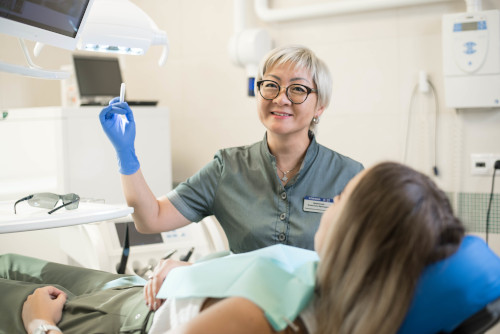
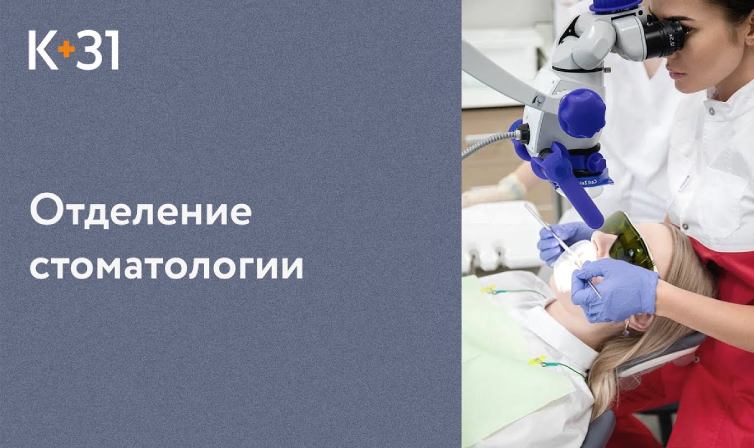
Modern methods of diagnostics and dental treatment at "K+31"

This award is given to clinics with the highest ratings according to user ratings, a large number of requests from this site, and in the absence of critical violations.

This award is given to clinics with the highest ratings according to user ratings. It means that the place is known, loved, and definitely worth visiting.

The ProDoctors portal collected 500 thousand reviews, compiled a rating of doctors based on them and awarded the best. We are proud that our doctors are among those awarded.
Make an appointment at a convenient time on the nearest date
Price
Other Services

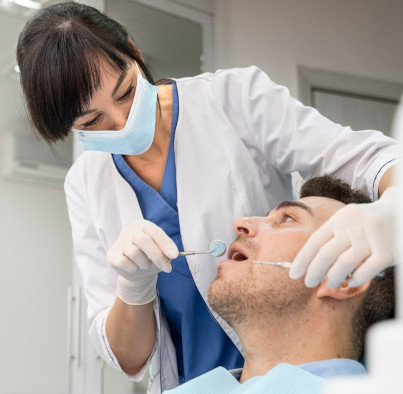
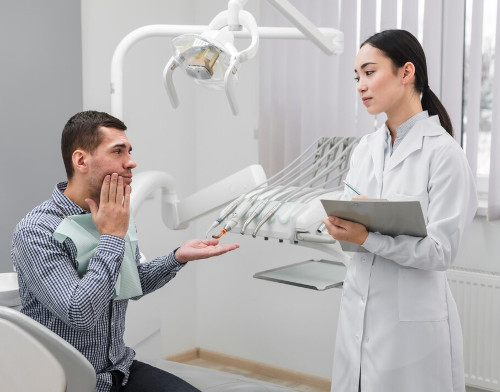
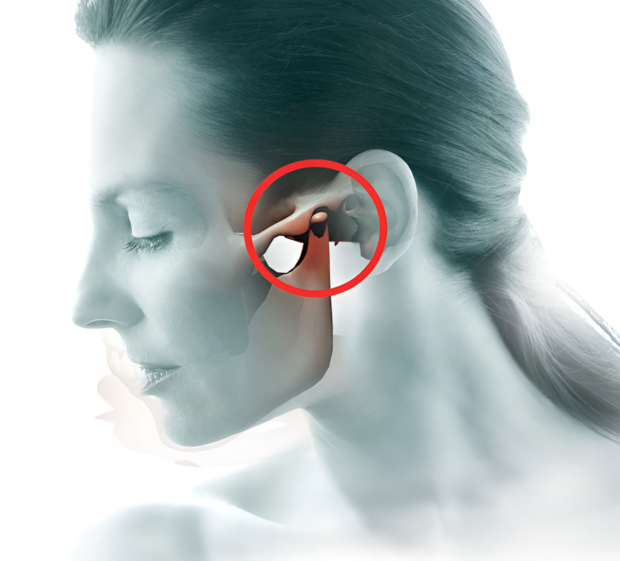
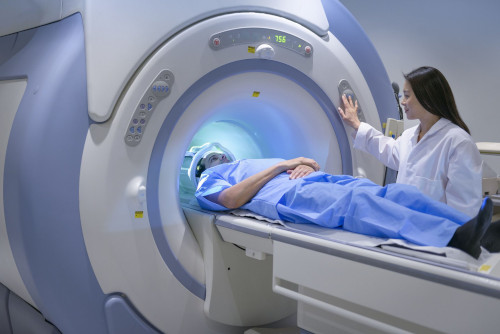











































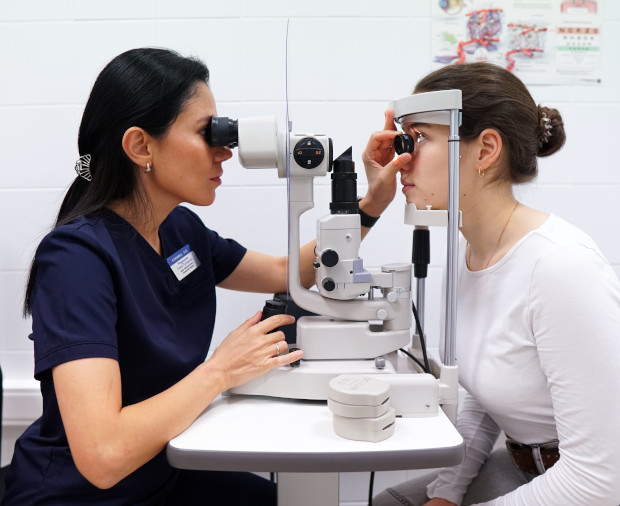


Symptoms and indications for examination
Patients with suspected TMJ disorders usually complain of the following symptoms:
Patients may experience ear pain, ear congestion, and hearing loss, which is associated with the proximity of the TMJ to the ear canals. Complaints of numbness or tingling in the face, especially in the morning, are possible. Sometimes a change in posture is noted due to pain compensation, which leads to discomfort in the neck and shoulders. The presence of such symptoms is an indication for a comprehensive diagnosis of TMJ.